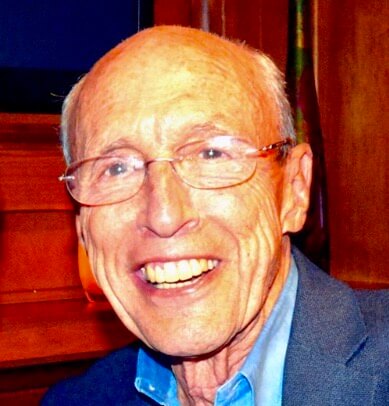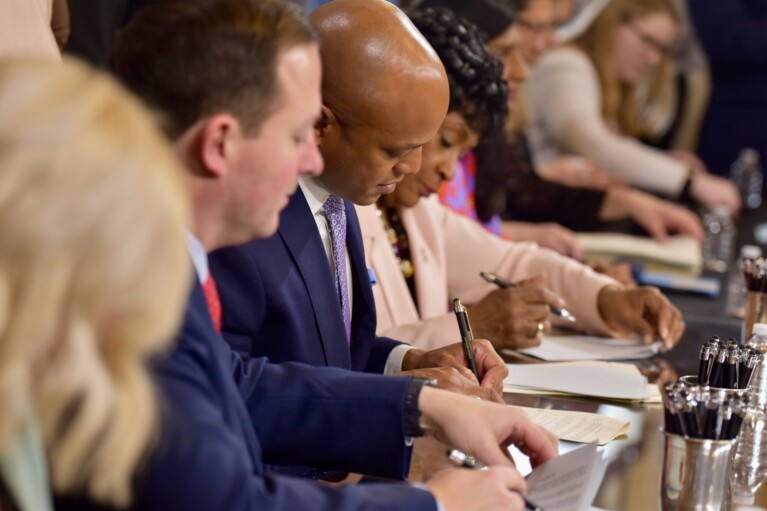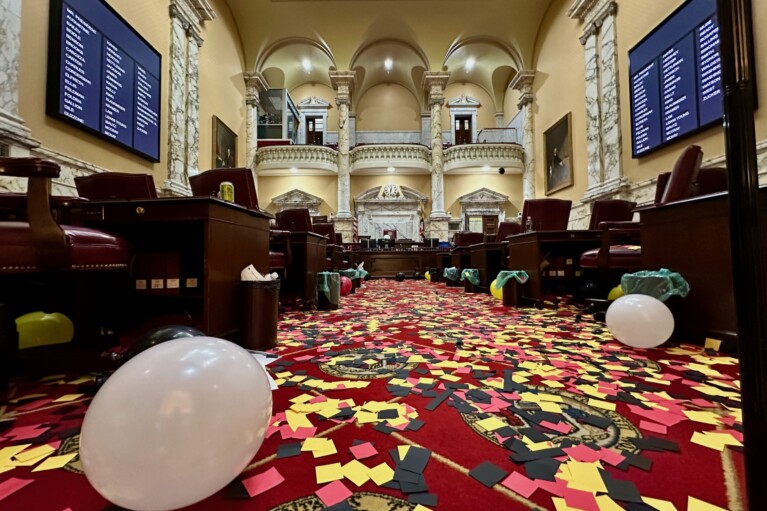
Maybe it’s because Halloween is lurking, but I am scared that something creepy is going on in our public schools. I’m referring to the mission creep that is occurring as teachers are asked more and more to add mental health and social-emotional learning to their already grueling workloads.
Senate President Bill Ferguson (D-Baltimore) recently identified school mental health as a priority in the wake of the pandemic. The U.S. surgeon general warns that “the challenges today’s generation of young people face are unprecedented and uniquely hard to navigate. And the effect these challenges have had on their mental health is devastating.” Students’ anxiety, depression and suicide symptoms doubled during the pandemic.
The saving grace is the remarkable policy response. In Maryland, federal COVID and state funds are dedicated to a dizzying array of programs, including school-based health coordinators, teacher training, community schools and partnerships linked to schools, restorative practices, and social and emotional learning (SEL) in classrooms.
SEL, which has the most potential direct impact on classroom teachers, has been around for decades. The leading national organization on SEL calls it the process through which students “acquire and apply the knowledge, skills, and attitudes to develop healthy identities, manage emotions and achieve personal and collective goals, feel and show empathy for others, establish and maintain supportive relationships, and make responsible and caring decisions.”
In an article “Should Schools Embrace Social and Emotional Learning?” Johns Hopkins expert Robert Balfanz notes the “strong case for taking an integrated approach to the social, emotional, and academic development of children rather than focusing on academics in isolation.” It should be a win-win for students and teachers.
Yet, it isn’t that simple. SEL and related mental health programs raise vexing questions. Are they a proper role for schools or should they be left to families, communities, and mental health providers?
And no surprise, SEL is now a political flashpoint. One prominent conservative opponent told a New York Times reporter that while SEL “sounds positive and uncontroversial in theory, in practice SEL serves as a delivery mechanism for radical pedagogy, such as critical race theory and gender deconstructionism.” Republicans are far more disapproving of SEL than Democrats.
However, apart from its political weaponization by conservatives, it’s hard to know what is really going on because there are so many question marks. How is SEL delivered? Do teachers have the right training and skills? Is it effective? (The scant research on effectiveness seems divided.)
And, in my view, here’s the toughest question of all: is SEL diverting teachers from their core academic mission? Does it change the role of the teacher, as one analyst pondered, “from a pedagogue to something more closely resembling a therapist, social worker, or member of the clergy?” In one poll, 81% of teachers said they were spending more time than ever on SEL.
Teachers had back-breaking jobs before the pandemic. According to a recent survey, “a typical teacher works a median of 54 hours per week. But just 46% of their time in the school building is spent teaching.”
No wonder the mental health of teachers, like students, is going downhill. Another survey revealed that teachers and principals suffer from job-related stress at a rate roughly double that of other working adults.
It’s also hard to predict the future course of SEL and related programs. SEL, in particular, comes in many different modes. For example: specialized SEL curricula, teacher-led discussion groups, and the infusion of SEL into all school courses.
Student mental health problems and programs are soaring in Maryland. Inquiries to several local school districts reveal an impressive assortment of efforts, notably SEL in the early grades where relationships between teachers and children are especially crucial.
One thing for sure: teachers strongly support the goals and values of SEL and other mental health programs. The kids need SEL. But that still begs vexing questions about its net effect on classroom teaching and student achievement.
Fortunately, there are straightforward ways to take the time and pressure off of teachers. One is for SEL and related mental health services to be provided largely by inside school staff who are mental health specialists like social workers, psychologists and counselors. Better still, the full panoply of mental health services can be best provided outside the regular school day.
The Blueprint for Maryland’s Future commendably blazes the outside trail, expanding “Coordinated Community Supports” and especially outside “wraparound services” for families and children. The rub, as I’ve analyzed elsewhere, is that wraparound programs compete with in-school academic instruction and mental health specialists for scarce education funds.
How, then, should the mental health crisis of students be resolved? Throughout U. S. history, reformers have often tried to lay society’s ills on the doorstep of the schoolhouse and on the shoulders of teachers. It typically hasn’t worked well, and today, more than ever, public schools face existential challenges.
That’s why policymakers must not be Halloween scaredy-cats and shy away from the challenges of mission creep. At the very least, the next Maryland governor and General Assembly should substantially increase funding for in-school psychologists, social workers and counselors, while sustaining support for outside wraparound programs. An analysis of federal data shows that Maryland ranks near the bottom of all states in the ratio of psychologists and counselors to students.
And the Maryland State Department of Education must follow through on its recent thorough overview of ongoing mental health efforts. There should be follow-up comprehensive planning, collection of data, monitoring and evaluation, including whether in-school mental health programs like SEL put undue pressure on teachers at the expense of academic instruction.
We’ll all be feeling healthier about the future of our schoolchildren if these challenges are met.




 Creative Commons Attribution
Creative Commons Attribution